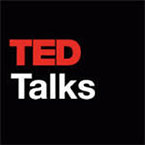Crucell’s Chief Scientific Officer Jaap Goudsmit continues his series on childhood vaccination, focusing this time on hepatitis B. As he points out, protecting children against this infectious disease also eliminates a leading cause of liver cancer later in life.
One of the five immunogenic components of our pentavalent children’s vaccine Quinvaxem® is the hepatitis B surface antigen1, which protects completely against the hepatitis B virus. The hepatitis B virus causes liver inflammation (hepatitis) and malfunction, leading to jaundice—a medical condition characterized by yellowing of the skin or whites of the eyes. Long-term infection with hepatitis B virus is one of the most important causes of liver cancer.
Hepatitis B can be transmitted in several different ways: from an infected mother to her unborn child; between sexual partners; and through contact with contaminated blood—for example through blood transfusions, sharing of needles or syringes among drug abusers, and re-use of contaminated needles and syringes by healthcare workers in areas where disposables are too expensive, in short supply or both.
It has been estimated that about a quarter of the world population—that is, more than 2 billion people—have been infected with the hepatitis B virus. Of those, an estimated 400 million people continue to carry the virus. This chronic hepatitis infection eventually leads to liver cancer. The younger you acquire the infection, the less chance there is of clearing the virus from the body, so preventing hepatitis B virus infection in newborns and toddlers is key for the prevention of liver cancer later in life. In Asian countries like China, hepatitis B infection in childhood is the most common cause of liver cancer.
Tracking down the virus
Hepatitis B virus has most likely infected human beings as long as humans exist as a species. It is unique among the viruses that store their genetic information in the form of DNA, in that the hepatitis B virus DNA is circular and not fully double-stranded, and like RNA viruses such as HIV it uses reverse transcription to replicate. As a result, the virus can evolve faster than most DNA viruses and is more adaptable to environmental factors, including antiviral drugs.
The first record of a hepatitis B epidemic dates back to the late 19th century. When a smallpox outbreak occurred in Bremen in 1883, over a thousand shipyard workers were vaccinated against smallpox using pus obtained from the pox lesions of other individuals. Almost 200 of these vaccinated workers developed classical hepatitis B six weeks to several months after the vaccination.
The hepatitis B virus was not discovered until the 1960s—by Baruch Blumberg (1925–2011), who shared the 1976 Nobel Prize in Physiology and Medicine with D. Carleton Gajdusek for discovering ‘new mechanisms for the origin and dissemination of infectious diseases’. Blumberg stumbled onto the hepatitis B virus while studying protein markers for disease susceptibility, in this particular case the ‘Australia antigen’. In 1964 he identified an antigen in the serum of Australian aboriginals that was recognized by antibodies in the serum of a transfused hemophilia patient from New York.
The key question was what this ‘Australia antigen’ was. Blumberg observed it in high frequency in leukemia patients, which ‘generated the hypothesis that individuals at high risk of leukemia might also have high frequencies of the antigen.’ (The quote comes from Blumberg himself, in the great book Vaccines: A biography). Blumberg associated the presence of Australia antigen with hepatitis in 1967, but the credit for identifying the Australia antigen as the surface antigen of the hepatitis B virus should go to Alfred Prince. He reported this finding in a paper entitled ‘An antigen detected in the blood during the incubation period of serum hepatitis’, which was published in the Proceedings of the National Academy of Sciences (USA) in 1968. Prince discovered that the amount of hepatitis B surface antigen (HbsAg) peaks early in infection and that HbsAg disappears from the blood as soon as antibodies against this antigen appear.
Vaccine development
The recognition that HbsAg persists in the blood of some individuals suggested that it could be recovered from the blood and used as a vaccine, after inactivation of the infectious virus by heat and/or formalin. Blumberg and Irving Millman made the first effective hepatitis B vaccine in 1972, a year after Saul Krugman showed that injecting boiled serum obtained from HbsAg carriers into children protected them from infection with the hepatitis B virus.
However, there were two problems with all vaccines prepared from human serum: there was never enough of it to supply all the millions of people worldwide in need, and it was very unsafe. The serum of chronic carriers, from which the vaccine was extracted, contained not only free-floating HbsAg but also infectious hepatitis B virus.
Maurice Hilleman (1919–2005) of Merck produced the first commercial blood-derived hepatitis B vaccine, but more importantly also the first vaccine based on recombinant DNA technology. This hepatitis B vaccine based on the production of HbsAg in yeast (Saccharomyces cerevisiae) was licensed in 1986. It was safer than the blood-derived vaccine, but cost over a hundred dollars a dose. The world waited for a cheap way to produce hepatitis B vaccine.
For all the hundreds of millions of children in the world to benefit from a hepatitis B vaccine, the production costs had to come down 1000–10,000-fold. The Dutchman Cornelis Hollenberg succeeded in doing so. In collaboration with Zbigniew Janowicz, Hollenberg developed the production of HbsAg in a high-producer yeast called Hansenula polymorpha.
This is the system currently used by Crucell to produce our hepatitis B vaccine (Hepavax-Gene®) and the hepatitis B component of Quinvaxem® pentavalent vaccine. Hundreds of millions of doses have been provided to the world so far, preventing hundreds of thousands of cases of hepatitis B. And because our pentavalent vaccine specifically targets the world’s poorest children at highest risk of hepatitis B infection, such as children in Africa, the vaccine pioneered by Cor Hollenberg and produced by Crucell prevents more cases of hepatitis B and hence liver cancer than any other vaccine.<<
1 An antigen is a foreign substance that triggers an immune response in the body.




